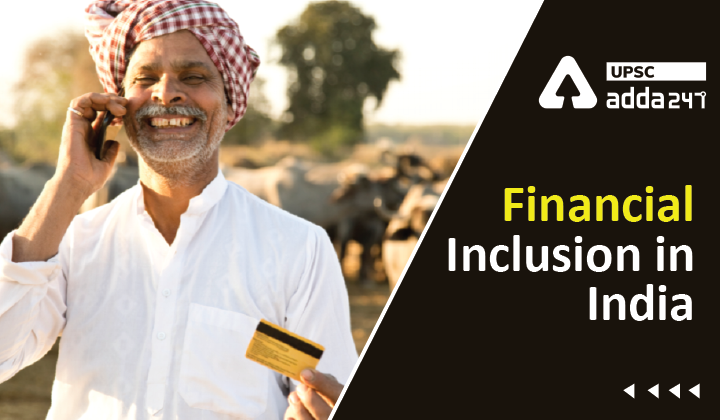Table of Contents
Financial inclusion UPSC
What is financial inclusion?
- Financial inclusion means a process of ensuring access to financial services and timely and adequate credit to vulnerable sections of society like low-income group people.
Financial inclusion importance
Economic importance
- Access to financial services enables the downtrodden section of society to come out of their state of poverty.
- Financial inclusion not only drives families and societies, but also help drive economic growth of a nation.
Social importance
- Financial inclusion helps in reducing poverty which further helps in reducing inequality in the society.
- Financial inclusion empowers the women to take financial decisions, and hence empowers them to take decisions in the family.
Governance
- Financial inclusion reduces corruption as it removes intermediaries, and the errors of inclusion and exclusion is minimised.
- It also helps the government in identifying the intended beneficiary, and thus work for the welfare of the targeted communities as envisaged under Article 38 of our constitution.
Financial inclusion challenges
- Financial literacy: To make financial inclusion a reality, financial literacy is a must. According to a global survey, only 25% Indians are aware of basic financial concepts.
- Financial inclusion is based on the use of ICT. However, the digital divide in the country would lead to inequitable financial inclusion.
- With increase in internet banking, issue of phishing is rising. The benefits of financial inclusion could not be accrued if people are not aware of withholding sensitive information.
- ICT- based financial inclusion would need a robust infrastructure that is lacking in our country.
- Geography: Rangarajan committee said that financial exclusion is highest among households of eastern, north eastern and central areas of our country due to poor infrastructure.
Financial inclusion solutions
- Meaningful collaboration: Financial inclusion calls for technology service providers, mobile network operators, corporate houses, and banking correspondents to develop efficient delivery models.
- Banks need to look after the needs and constraints of rural areas and not impose the urban models in rural areas.
- Financial literacy and awareness need to be focussed upon. Programs like e-BAAT of RBI are needed to increase awareness about financial services.
- Along with financial literacy, consumer protection should be ensured through better dissemination of information to customers.
Financial inclusion in India: Present situation
- According to a report by World Bank, only 8% of Indian borrows from institutional and formal sources.
- As per census 2011, only 58% of households are availing banking services in the country.
- At present, only about 5% of India’s 6 lakh villages have bank branches.
Financial inclusion: Steps by the government
Banking initiatives
- SHG-Bank linkage programme: NABARD initiated this project in 1992 to formalise 500 SHGs to the formal financial instructions.
- Creation of Regional Rural Banks and Micro Finance Institutions to increase institutional presence in unbanked areas.
- PMJDY: In 2015, government has launched Pradhan Mantri Jan Dhan Yojana to provide every household universal access to banking facilities.
- PMMY: Government launched Pradhan Mantri Mudra Yojana to formal access of financial services to the micro enterprises.
- Priority Sector Lending by RBI to provide credit facilities to a few targeted sectors like agriculture, MSMEs, among others.
Social security initiatives
- PM Suraksha Beema Yojana and PM Jeevan Jyoti Beema Yojana to provide insurance coverage to the people.
- Atal Pension Yojana to provide pension to the people.
Digital initiatives
- Rupay cards, BHIM, JAM trinity are a few digital initiatives by the government to increase financial inclusion in the country.
Financial inclusion: Way forward
- Financial inclusion forms a key to achieve development in any country. If adequate measures are taken, financial inclusion could stimulate the benefits of economic growth to the poor.
UPSC favourite topics





 TSPSC Group 1 Question Paper 2024, Downl...
TSPSC Group 1 Question Paper 2024, Downl...
 TSPSC Group 1 Answer key 2024 Out, Downl...
TSPSC Group 1 Answer key 2024 Out, Downl...
 UPSC Prelims 2024 Question Paper, Downlo...
UPSC Prelims 2024 Question Paper, Downlo...





